More than missing guns: Why America lost dogfights over Vietnam
- By Alex Hollings
Share This Article
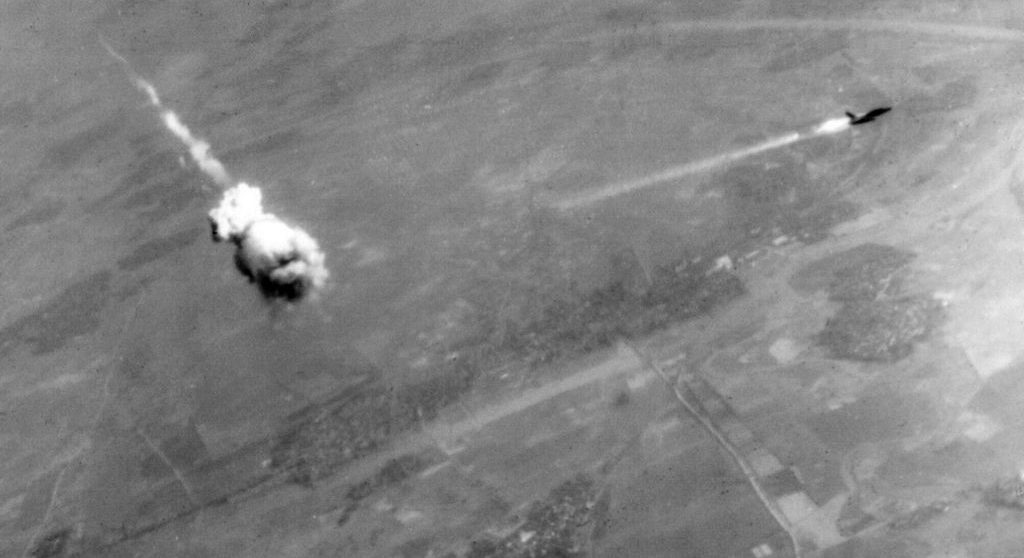
Today, America prizes air superiority in its approach to warfare, but there’s a growing sentiment among many within the defense apparatus that dogfights, or close-quarters air-to-air combat, is a thing of the past. Advanced sensors and highly effective air-to-air weapons that can reach beyond visual ranges suggest air combat will now take place at longer distances than ever, making the need for aerobatic air superiority jets a thing of the past.
This sentiment can be found in statements made by many modern fighter pilots, but might be best reflected in this post from an F-16 pilot that went viral in aviation circles shortly after it went up:
The Raptor is about as cool as it gets, and it is the greatest air superiority fighter the world has ever seen, but like the F-15C that it was originally designed to replace it is an airplane without a real mission in modern conflict,” Air Force F-16 pilot Rick Scheff famously explained in an online discussion.
“When was the last time an American fighter killed another fighter in an air-to-air engagement? Go look it up, I’ll wait.”

Objectively speaking, there’s some real truth to Scheff’s statement. It seems inevitable that dogfights of a sort will break out any time two nations put a large volume of tactical aircraft into the same airspace, but it is hard to deny that there have been no fights between global powers for the better part of 80 years.
But those who disagree with the idea that close-quarters air battles are a thing of the past would posit that this period of relative peace and stability in our world is an exception. They would argue that Vietnam is a good example of how dogfights occur when airpowers tussle, and that we should be careful not to assume that the days of airpowers going to war are over, simply because it hasn’t happened lately.
To be clear, there are valid points to argue on either side of this debate, but it’s important not to lose sight of the complexity of the air war over Vietnam when using it as the foundation for an argument about dogfights. The truth is, America’s difficulties over Vietnam can’t be summed up in a single sentence about a lack of guns in the F-4 or the failures of a certain missile platform.
America’s troubles in the skies over Vietnam began well before the first shots of the conflict were fired, and continued well into the fighting. Some of the issues were technological, while others were bureaucratic and even political. The truth is, America lost aircraft and pilots over Vietnam not because of a single incorrect conclusion (“dogfights are over”), but rather because of a litany of errors that were – largely – made with the best of intentions.
There are lessons to be learned from the dogfights of Vietnam. We must look at them with clear eyes, to ensure we’re learning the right ones.
Related: Air Force’s new F-15EX makes dogfighting debut in Alaska war games
Just how bad were the dogfights over Vietnam?
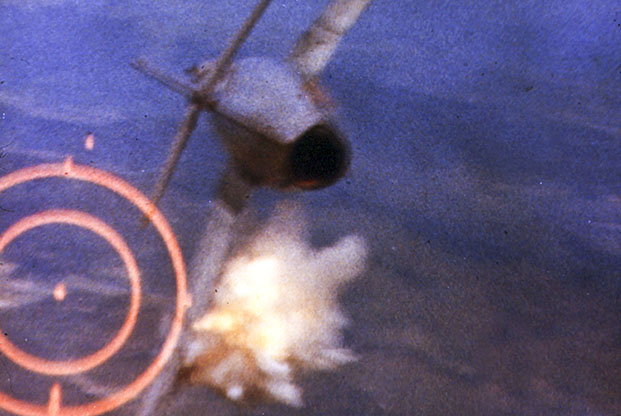
During the Vietnam War, American fighter pilots saw a significant downturn in kill-to-loss ratios as compared to figures from the Korean War. Some argue US pilots over Korea came home with a 10:1 kill ratio (or 10 enemy fighters shot down for every U.S. fighter lost). However, that figure was originally meant to be specific to the F-86 Sabre, and nevertheless, modern historians believe it to be inflated. Real figures were likely closer to a still-impressive 8:1.
At times during the Vietnam War, on the other hand, that ratio had diminished to less than 1:1. That means that during some periods, the North Vietnamese were shooting down more American fighters than they were losing. While the overall ratio was significantly better, likely closer to 5.5:1 across the total force, the harsh reality of air combat over Southeast Asia can perhaps best be appreciated when looking at the hard numbers.
Between February 1962 and October 1973, the United States lost 1,737 fixed-wing aircraft in combat, with another 517 going down due to other issues in Vietnam. Throughout the entirety of the war, it was exceedingly rare for a week to pass without an American aircraft being lost in the fight, and at times, it happened daily.
The U.S. Air Force lost 40 percent of its entire fleet of F-105 Thunderchiefs over Vietnam. Additionally, a bit more than 12 percent (about one out of every eight) of F-4s built for all services met their end over Vietnam’s jungles. It’s very important to note, however, that the Air Force and Navy weren’t taking these losses lying down. In fact, the Air Force improved its tactics so dramatically over the course of the war that in the final five months of it, its fighter pilots were downing the enemy at a rate of 15:1.
The numbers matter, but the lessons matter more

This sort of picking nits is important for the sake of an accurate historical record. However, it doesn’t erase the fact that in the late 1950s and early 1960s, America seemed to incorrectly believe that close-quarters dogfighting was a thing of the past thanks in large part to the advent of (this will sound familiar) improved sensors and highly capable air-to-air weapons.
Such was the belief that new air-to-air missiles like the AIM-9 Sidewinder and AIM-7 Sparrow would render previous forms of dogfighting obsolete that America’s Mach 2-capable F-4 Phantom II came through production without so much as an onboard cannon, which was considered standard equipment for fighters until that time.
“That was the biggest mistake on the F-4,” John Chesire, who flew 197 combat missions in the Phantom during two tours in Vietnam, told Air & Space Magazine.
“Bullets are cheap and tend to go where you aim them. I needed a gun, and I really wished I had one.”
It wasn’t long before this line of thinking put American pilots into some pretty tough situations, as they tried to do battle with the notably slower and less advanced MiG 15, 17s, 19s, and 21s swarming the skies over Vietnam. Their ability to take tight turns and orient their noses at the faster-moving American fighters before they could swing around gave them opportunities to score gun kills. And to make matters worse, America’s new missiles didn’t always quite work as advertised, costing pilots valuable opportunities to down their opponents when they could.
Related: How an F-16 dodged 6 surface-to-air missiles in an airstrike gone wrong
The F-4 was built for a different kind of war

While a lack of guns didn’t do the F-4 any favors, that was just one of many variables that eventually conspired against American pilots in dogfights over Vietnam. As explained by Benjamin Lambeth in his book, The Transformation of American Air Power (Cornell Studies in Security Affairs), America’s emphasis on winning the nuclear fight – fielding fast-moving fighters designed to intercept Soviet aircraft at long distances or carry heavy nuclear payloads – left its pilots at a disadvantage against harder-cornering platforms like the MiG-17 and 21. But the disadvantage extended well beyond turn performance.
The F-4 Phantom II offered poor visibility to the rear from inside the cockpit, making it tough to keep an eye on slower-moving opponents as they passed by. To make matters worse, the J-79 engines that could propel the F-4 past Mach 2 were known to produce a heavy smoke trail when not flying under afterburner. Contemporary reports suggest the smoke trail left by American F-4s would remain visible for as far as 30 miles, giving Vietnamese fighters, and crews on the ground, ample opportunity to spot and track the American jets as they flew through contested airspace.

Once the fight was on, American F-4s had a very narrow window of opportunity to leverage any advantage they might have. According to one declassified performance comparison between American and North Vietnamese aircraft, “only in range and first-shot capability does the F-4C enjoy a substantial advantage over the MiG-21 throughout the envelope.”
In other words, if the F-4 didn’t win a fight with its first shot, it was likely flying at a disadvantage from then on. Of course, that’s where problems with America’s air-to-air missiles became even more evident.
Between 1965 and March of 1968, of the 224 AIM-7s fired at enemy aircraft during air combat, only 20 resulted in kills for a success rate of just 8.9 percent. Other missiles faired better, but not much, with the AIM-4 recording a success rate of 10.7 percent and the AIM-9B coming in at 16 percent. The common perception that American air-to-air missiles failed to function as well as expected is entirely accurate. Yet, it’s certainly worth noting that the AIM-9 matured as a result, and eventually the AIM-9L provided an 80 percent success rate for the Brits in the Falklands War.
Not all of the blame can be placed on the hardware, however: Aircrew failures (like not keeping the target illuminated by radar until impact) were faulted for about 33 percent of the AIM-7’s misses. It’s also important to note that these weapons weren’t designed for this sort of combat. They were primarily intended to engage Soviet bombers at long ranges, not win dogfights over the jungles of Vietnam.
Related: You’re probably thinking of missile costs all wrong
The rules of engagement negated America’s missile advantage
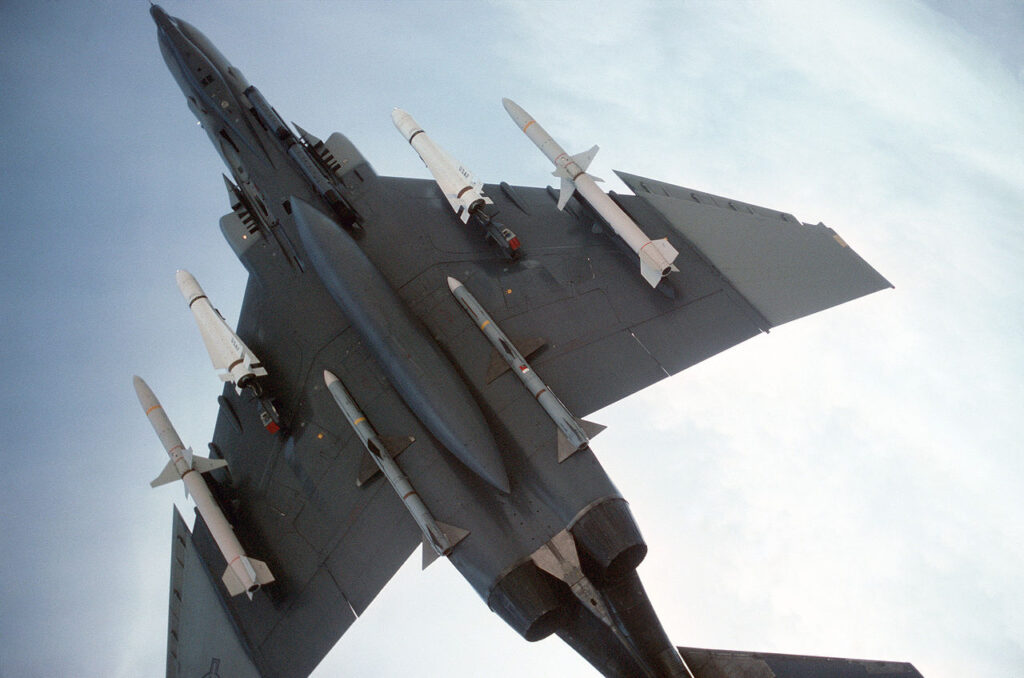
The AIM-7 Sparrow air-to-air missile was capable of engaging enemy fighters at ranges as far as 12 miles when intercepting head-on, which could have given the F-4 the “first shot” opportunity it needed to win more fights. However, the rules of engagement American pilots were given required that they make visual identification of targets before launching a weapon. Visual identification, of course, can only occur within visual range.
So, while America’s pilots had beyond-visual-range weapons at their disposal, they were effectively barred from using them. Once pilots had closed to within visual range of their opponents, they were now at a disadvantage to the MiG’s tight turn radius and guns.
But this limitation wasn’t just an issue when it came to weapons employment. It also eliminated the American opportunity for surprise in its air attacks. American fighters needed to be close enough to see their enemies before they could fire, but that inevitably meant their Vietnamese opponents could see them too. The F-4 was faster and had a longer reach than its opponents, but policy forced the pilots to surrender those advantages to their less advanced opponents.
America’s tactics weren’t right for this fight either

The North Vietnamese famously produced far more flying Aces – pilots with at least five kills – than America’s Air Force or Navy, but that fact dismisses an important difference between these two aviator groups: American pilots were rotated into and out of the fight, often after 100 missions, whereas their opponents continued to fly combat sorties over their home turf throughout the conflict’s entirety. It’s sort of like comparing football stats between one player’s rookie season and another player’s entire career.
When the war began, America sent its most highly experienced aviators into the fight. But by 1966, the Air Force was sending pilots home after either 100 missions over North Vietnam or one year of combat over South. While this rotation was valuable to combat burnout and maintain morale, it also produced a pressing need for new pilots in the cockpit at frequent intervals. As a result, many pilots arriving in-country didn’t have any real tactical experience behind the stick before they were thrust into the thick of it.
Air Force F-4s were further hampered by tactics, as they often flew in a World War II-era formation referred to as a “fluid four.” This formation resulted in wingmen being too close (between 1,500 and 2,000 feet away at a 45-degree angle) to provide any real protection for the other aircraft and effectively limited the “attacking” portion of the formation to just the flight leader.
Using four aircraft to deliver one jet’s worth of ordnance was a stark contrast to the Navy’s “fluid-two” formations of two aircraft both leveraging their full loadouts.

“The wingman was always just another airplane in the air. I would have preferred to have gone into Route Package VI, under the conditions [in which] we were operating, with two highly qualified crews [flying Navy fluid two] rather than four… I had to spend 90 percent of my time keeping somebody in the flight from getting shot down [and] could not go about the business of MiG-CAP,” One Air Force flight leader later recounted.
American fighter pilots weren’t trained to win the dogfights over Vietnam

Before the Vietnam War, the United States had placed a huge emphasis on safety during training; so much so that it all but forbade the realistic training pilots needed to win dogfights over Vietnam. Further, most of the training F-4 pilots had for air combat was done against other F-4s, which flew nothing like the MiGs they were squaring off against in Vietnam.
This lack of realistic training meant many American fighter pilots were sent into the fight with very little dogfighting experience in general, and next to none against aircraft like the ones they’d be flying against.
Addressing this serious shortcoming eventually led to the establishment of the Air Force’s first-ever aggressor squadron – a group of pilots flying jets like the T-38 and later the F-5E Tiger, tasked with mirroring opponent tactics to provide a more realistic idea of what air combat would be like. Soon thereafter, the Air Force’s first-ever Red Flag training exercise, a massive operation meant to simulate complex air combat, was born to help rectify the lack of experience Air Force pilots had before heading into combat.
Likewise, the Navy made significant changes to how it prepared pilots for air warfare. In 1969, the US Navy created the Navy Fighter Weapons School, which later became the Navy Strike Fighter Tactics Instructor program, but is known to many simply as Top Gun.
While there’s room for debate as to what will come of dogfights in the next great conflict, the establishment and continued investment into both Red Flag and Top Gun following the Vietnam War prove without a doubt that the U.S. learned some valuable lessons from the fight that went on to help make America the most dominant air power in the world today.
Dogfights may seem like a thing of the past, but without any large-scale conflict to draw new data from, we’re left to rely on the hard-earned lessons of the past. Can America afford to come into the next big air fight using the same unfounded certainty we brought with us into Vietnam? Maybe the next large-scale war won’t see dogfights happen at all, but an aircraft that’s capable of scrapping with the best of them when a scrap arises.
This is a lot like the flak jacket I strapped on each day during my deployment to Mozambique, Africa. It was something I probably wouldn’t need that day… but still preferred to have it, just in case.
This article was originally published in July 2022. It has been edited for republication.
Read more from Sandboxx News
- The real-life TOPGUN advisors made cameos in ‘Top Gun’ and ‘Top Gun: Maverick’
- Pakistan wants to fly Chinese stealth fighters alongside its F-16s
- More than a century after WWI, war continues to be the same in Ukraine
- Special Operations Command’s commando aircraft are in jeopardy
- US Navy helicopters sink 3 Houthi attack boats attempting to seize cargo ship
Related Posts
Sandboxx News Merch
-

A-10 ‘Thunderbolt Power’ Framed Poster
$45.00 – $111.00 Select options This product has multiple variants. The options may be chosen on the product page -

‘Sandboxx News’ Camo Trucker Hat
$29.00 Select options This product has multiple variants. The options may be chosen on the product page

Alex Hollings
Alex Hollings is a writer, dad, and Marine veteran.
Related to: Military History

How US Special Forces took on Wagner Group mercenaries in an intense 4-hour battle
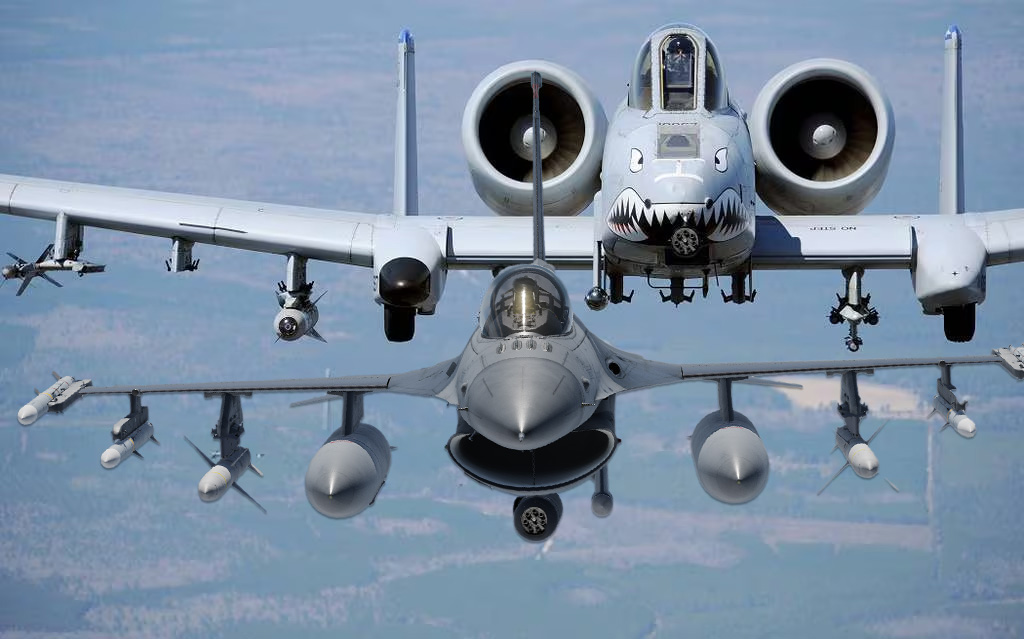
F-16s carrying the A-10’s 30mm cannon actually saw combat
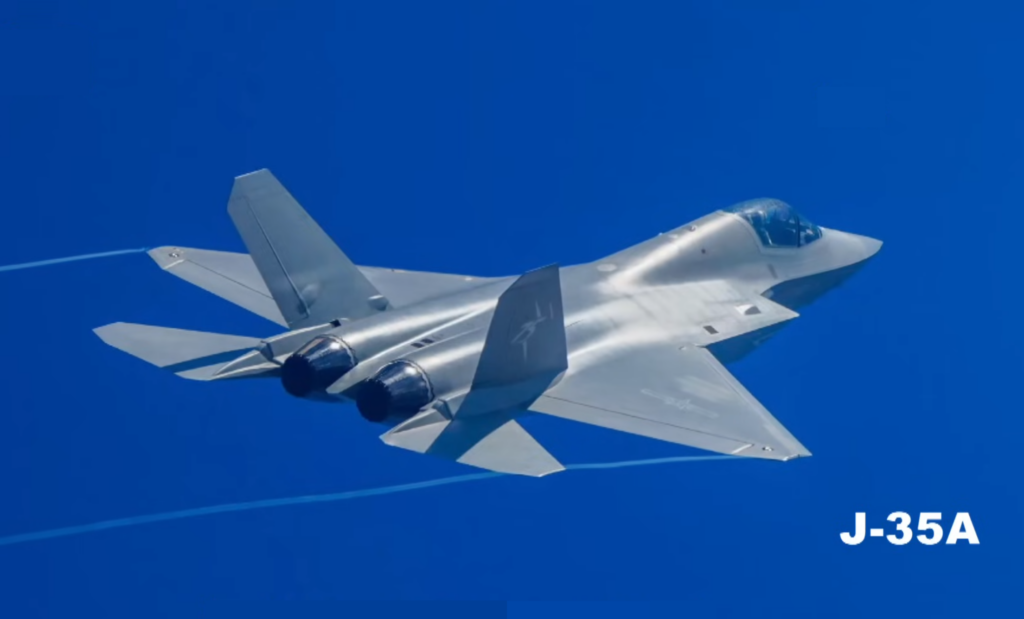
How does China’s new J-35 stealth fighter compare to America’s F-35?

Why China’s new J-35 jet could mean trouble for America
Sandboxx News
-

‘Sandboxx News’ Trucker Cap
$27.00 Select options This product has multiple variants. The options may be chosen on the product page -

‘AirPower’ Classic Hoodie
$46.00 – $48.00 Select options This product has multiple variants. The options may be chosen on the product page -

‘AirPower’ Golf Rope Hat
$31.00 Select options This product has multiple variants. The options may be chosen on the product page -

‘Sandboxx News’ Dad Hat
$27.00 Select options This product has multiple variants. The options may be chosen on the product page
